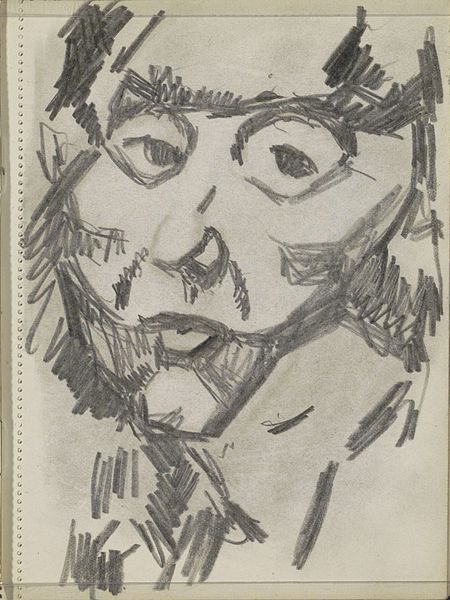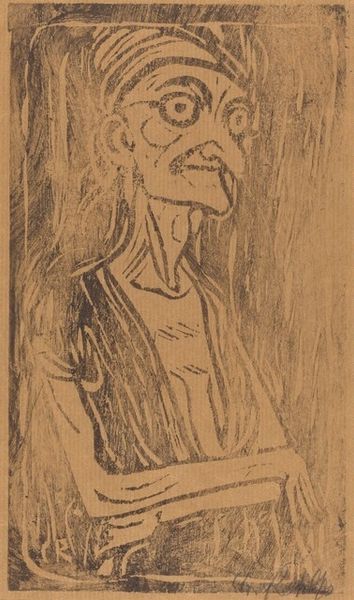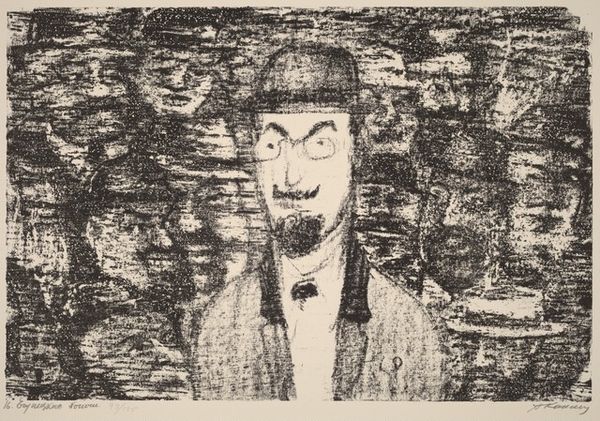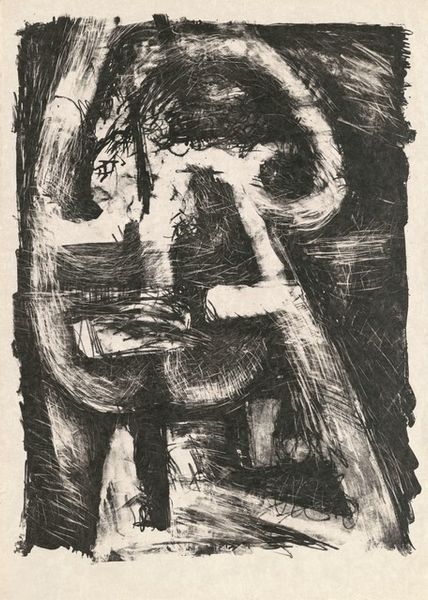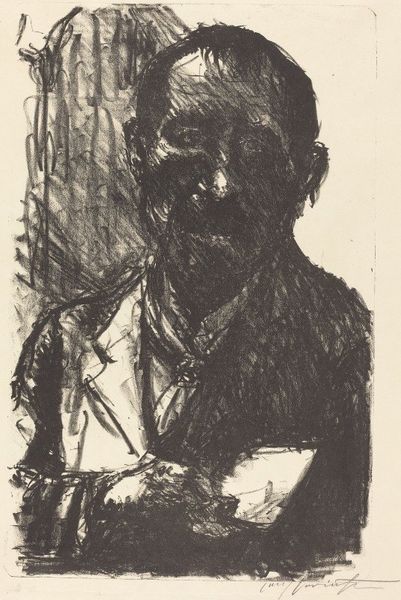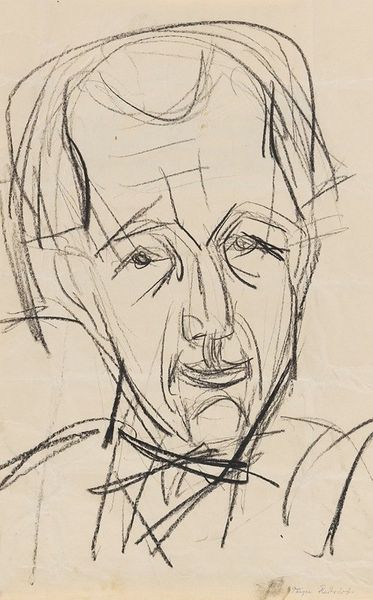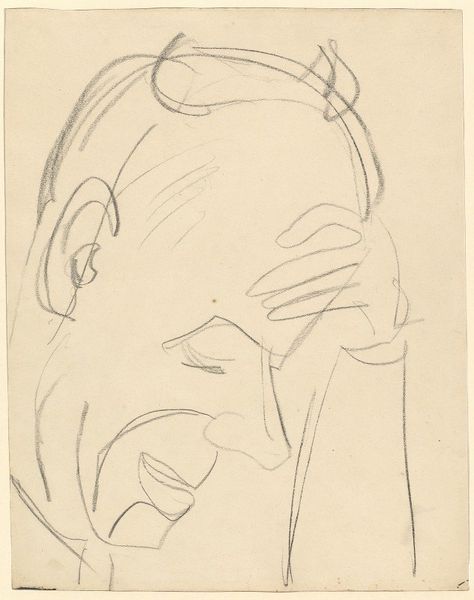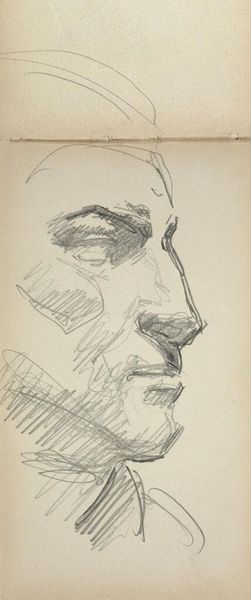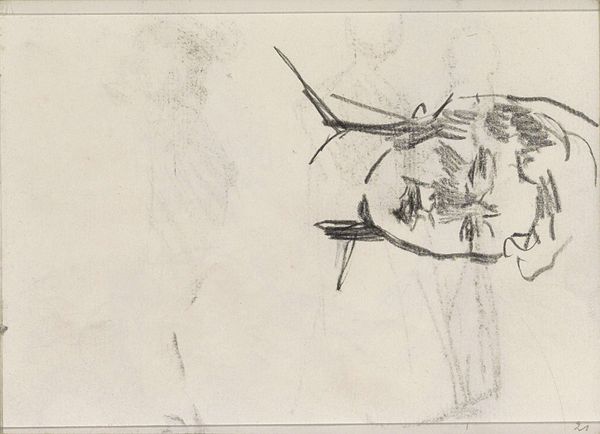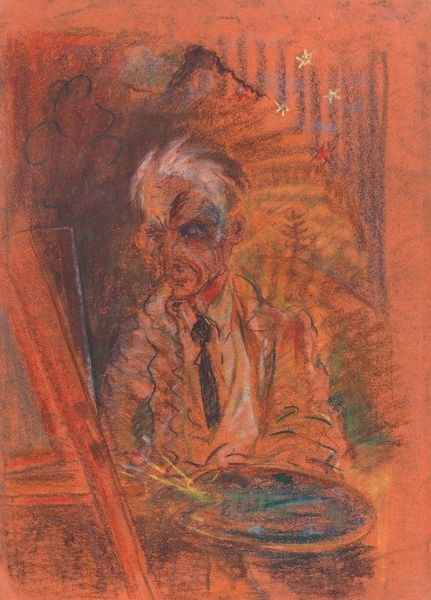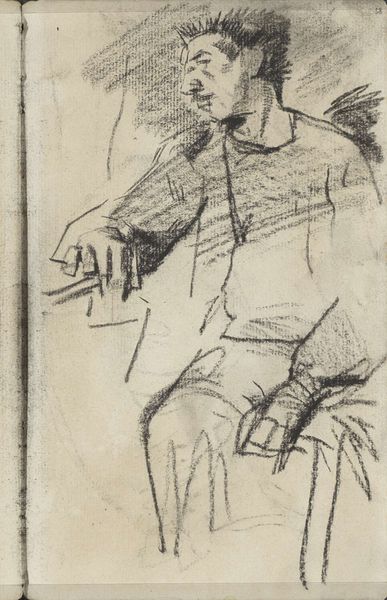
drawing, pencil, graphite
#
portrait
#
drawing
#
cubism
#
caricature
#
portrait reference
#
pencil drawing
#
pencil
#
graphite
#
portrait drawing
Copyright: Public Domain: Artvee
Curator: This intriguing pencil drawing is "Guillaume Apollinaire," created in 1921 by Louis Marcoussis. Editor: Immediately striking is its monochromatic warmth. The subject’s features are rendered in a captivating earthy tone, giving a palpable sense of depth, and somehow even an air of gentle contemplation, though its subject is far from simple. Curator: Indeed. Marcoussis, deeply involved with Cubism, here presents a compelling distortion of form. Notice how Apollinaire's face is fragmented into geometric planes, characteristic of the Cubist aesthetic, yet remains recognizably Apollinaire. Semiotically, it invites a deconstruction of traditional portraiture. Editor: And considering Apollinaire’s influence in the Parisian avant-garde scene at the time, a straightforward representational depiction would almost seem a disservice. This fractured rendering aligns perfectly with Apollinaire's own experimentation with poetic form and the broader spirit of the era. Do you think Marcoussis felt he was modernizing the form of the classic 'portrait of a man?' Curator: Undoubtedly. This image acts as a critical historical record, doesn’t it? Marcoussis wasn't just drawing a man, but depicting Apollinaire's intellectual and artistic status. Consider how the very act of representing someone in this manner reflects and reinforces his standing in that specific cultural landscape. His reputation precedes this depiction, solidifying his persona through form, line, and medium. Editor: Absolutely. Plus, the man holds a pipe. Subtly, this inclusion does so much in alluding to the literary and intellectual circles in which Apollinaire operated. It isn't just a portrait; it's a loaded visual statement. Curator: Precisely. Analyzing the angularity alone, one might overlook that loaded symbolism in service of the deconstructionist form of the work. I had a moment thinking he wasn’t very expressive! Editor: And I was surprised that I find it rather evocative despite the strict, almost cold, nature of cubist works, traditionally. Each angular plane shapes how we view and read this image and the man behind it. Curator: It's a fine lesson in historical artistic expression and its relationship to cultural forces. Editor: It absolutely invites us to look and then look again, beyond that initial warm glow, into the complexities it presents.
Comments
No comments
Be the first to comment and join the conversation on the ultimate creative platform.
